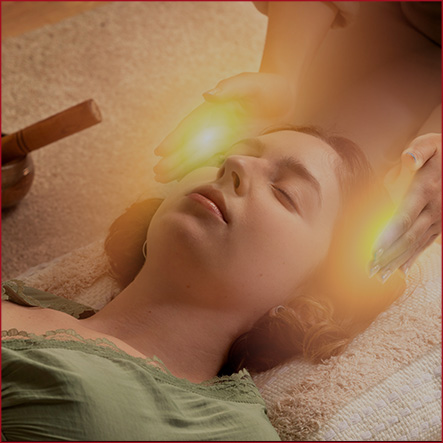Hello world!
Welcome to WordPress. This is your first post. Edit or delete it, then start writing!



Reiki is a form of energy therapy that originated in Japan. The word “Reiki” combines “rei” (universal) and “ki” (life energy), often interpreted as “mysterious atmosphere” or “miraculous sign.”
It’s based on the idea that energy can become blocked in the body due to physical or emotional pain, potentially leading to illness. Reiki practitioners use gentle touch or hand movements to promote energy flow, aiming to support relaxation, relieve pain, accelerate healing, and reduce symptoms of illness.
The modern form, Usui Reiki Ryoho, was developed by Mikao Usui in 1922, though similar practices have existed for centuries. Reiki is also known as palm healing or hands-on healing and is considered a complementary therapy alongside conventional medical care.


In a Reiki session, you remain fully clothed and either lie on a massage table or sit in a comfortable chair. The practitioner uses light touch or holds their hands just above your body, working through a series of hand positions focused on energy centers (chakras) or areas of discomfort. The aim is to channel universal life energy to help clear blockages, restore balance, and support the body’s natural healing processes. The atmosphere is peaceful, often with soft music and dim lighting to enhance relaxation. Sessions usually last 45 to 60 minutes, during which you may feel warmth, tingling, or simply a sense of deep calm. Afterward, people often report feeling refreshed, emotionally lighter, and more centered. Reiki is non-invasive and can be used alongside medical treatments to support physical, emotional, and mental well-being.

The basic Reiki technique involves placing hands lightly on or just above specific parts of the body.
Common positions include the head, shoulders, stomach, and feet.
Each position is held for several minutes to channel energy.
The practitioner moves their hands slowly over the body to sense areas of blocked or stagnant energy.
This helps identify where healing is needed.
After a session, practitioners often use grounding techniques to help bring energy back into balance.
This can involve touching the earth, deep breathing, or visualizing roots connecting to the ground.
Lorem ipsum dolor sit amet, consectetur adipiscing elit. Ut elit tellus, luctus nec ullamcorper mattis, pulvinar dapibus leo.


Reiki is a form of energy therapy that originated in Japan. The word “Reiki” combines “rei” (universal) and “ki” (life energy), often interpreted as “mysterious atmosphere” or “miraculous sign.”
It’s based on the idea that energy can become blocked in the body due to physical or emotional pain, potentially leading to illness. Reiki practitioners use gentle touch or hand movements to promote energy flow, aiming to support relaxation, relieve pain, accelerate healing, and reduce symptoms of illness.
The modern form, Usui Reiki Ryoho, was developed by Mikao Usui in 1922, though similar practices have existed for centuries. Reiki is also known as palm healing or hands-on healing and is considered a complementary therapy alongside conventional medical care.


In a Reiki session, you remain fully clothed and either lie on a massage table or sit in a comfortable chair. The practitioner uses light touch or holds their hands just above your body, working through a series of hand positions focused on energy centers (chakras) or areas of discomfort. The aim is to channel universal life energy to help clear blockages, restore balance, and support the body’s natural healing processes. The atmosphere is peaceful, often with soft music and dim lighting to enhance relaxation. Sessions usually last 45 to 60 minutes, during which you may feel warmth, tingling, or simply a sense of deep calm. Afterward, people often report feeling refreshed, emotionally lighter, and more centered. Reiki is non-invasive and can be used alongside medical treatments to support physical, emotional, and mental well-being.

The basic Reiki technique involves placing hands lightly on or just above specific parts of the body.
Common positions include the head, shoulders, stomach, and feet.
Each position is held for several minutes to channel energy.
The practitioner moves their hands slowly over the body to sense areas of blocked or stagnant energy.
This helps identify where healing is needed.
After a session, practitioners often use grounding techniques to help bring energy back into balance.
This can involve touching the earth, deep breathing, or visualizing roots connecting to the ground.
Lorem ipsum dolor sit amet, consectetur adipiscing elit. Ut elit tellus, luctus nec ullamcorper mattis, pulvinar dapibus leo.
Welcome to WordPress. This is your first post. Edit or delete it, then start writing!